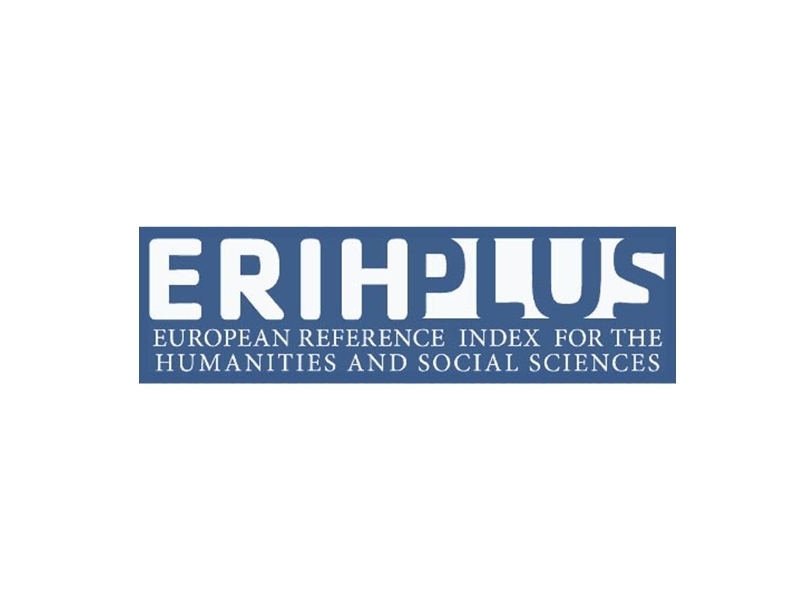Cultural Hegemony, Sobornost, and the 1917 Russian Revolution
Abstract
This essay is an attempt to develop a more consistent understanding of the success of the Russian Revolution by involving the culturally particular setting in which the revolution happened: namely, the cultural dominance of Eastern Orthodox Christianity, the religion professed by the majority of Russians in 1917. In critiquing Antonio Gramsci’s interpretation of the success of the revolution, the paper examines the multiple meanings of the Eastern Orthodox Christian idea of sobornost (conciliarity) and the type of collectivism it promotes. It goes on to argue that this experience and familiarity with religious sobornii/conciliar collectivism resulted in the formation of a functionally analogous secular political phenomenon during the revolution, namely the workers’ councils (soviets), the sine qua non of Russian Revolutionary success.
References
Anweiler, Oscar (1974). The Soviets: The Russian Worker, Peasants, and Soldiers Councils, 1905–1921. Trans. Ruth Hein. New York: Pantheon.
Bartlett, Roger (1990). Land Commune and Peasant Community in Russia: Communal Forms in Imperial and Early Soviet Society. London: Macmillan.
Boer, Roland (2011). “Before October: The Unbearable Romanticism of Western Marx- ism.” Monthly Review, 8 October.
Bonnell, Victoria E. (1983). Roots of Rebellion: Workers’ Politics and Organizations in St. Petersburg and Moscow, 1900–1914. Berkeley: University of California Press.
Bulgakov, Sergius (1988). The Orthodox Church. Trans. Lydia Kesich. Crestwood, NY: St Vladimir’s Seminary Press.
Chulos, Chris (1995). “Myths of the Pious or Pagan Peasant in Post-Emancipation Central Russia (Voronezh Province).” Russian History 22.2: 181–216.
Cliff, Tony (1987). Lenin 1917–1923: The Revolution Besieged. London: Bookmarks.
Donald, Moira (1993). Marxism and Revolution: Karl Kautsky and the Russian Marxists, 1900–1924. New Haven: Yale University Press.
Duncan, Peter J. S. (2000). Russian Messianism: Third Rome, Revolution, Communism and After. London: Routledge.
Freeze, Gregory (1990). “The Rechristianization of Russia: The Church and Popular Re- ligion, 1750–1850.” Studia Slavica Finlandensia 7: 101–136.
Gapon, Georgy (1909). “Programma russkogo sindikalizma” [“Program of the New Assembly”]. Novaya Rus, January 8/9.
Gramsci, Antonio (1971). Selections from the Prison Notebooks. Trans. Quintin Hoare and Geoffrey Nowell Smith. London: Lawrence and Wishart.
Harding, Neil (1983). Lenin’s Political Thought. New York: Macmillan.
Heretz, Leonid (2008). Russia on the Eve of Modernity: Popular Religion and Traditional Culture under the Last Tsars. Cambridge: Cambridge University Press.
Herrlinger, Page (2007). Working Souls: Russian Orthodoxy and Factory Labor in St. Pe- tersburg, 1881–1917. Bloomington: Slavica.
Hofstede, Geert, Hofstede, Gert Jan and Michael Minkov (2010). Cultures and Organizations: Software of the Mind. New York: McGraw-Hill.
Katz, Michael R. and William G. Wagner (2014). “Introduction.” In What is to be Done? Nikolai Chernyshevsky. Ithaca: Cornell University Press.
Keep, John (1976). The Russian Revolution: A Study in Mass Mobilisation. New York: W. W. Norton and Co.
Khomiakov, Aleksei Stepanovich (1864). The Orthodox Doctrine on the Church. Brussels: J. Van Buggenhoudt.
Kovalenko, D. A. (1955). “Pervyiy Vserossiyskiy s’ezd Sovetov” [“The First Russian General Assembly”]. In Vvedenskiy, B. A., ed., Bolshaya Sovetskaya Entsiklopediya (2 ed.), Vol. 32. M.: Bolshaya Sovetskaya entsiklopediya.
Krupskaya, Nadezhda K. (1925). “9-oe ianvaria i Lenin” [“9th of January and Lenin”]. Pravda, January 21.
Krupskaya, Nadezhda K. (1989). “Pyatyiy god. V emigratsi.” [“Fifth year. In Immigration”]. In Mchedlov, M. P., Polyakov, A. P., Sovokin, A. M., ed. Vospominaniya o Vladimire Iliche Lenine, 10 vols., Vol. 2. M.: Politizdat.
Lenin, Vladimir Ilich (1962). “Revolutsyonnye dni” [“Revolutionary days”]. In Lenin, V. I. Collected Works, Vol. 8. M.: Progress Publishers.
Lenin, Vladimir Ilich (1965a). “Svoboda kritiki I edinstvo deistvii” [“Freedom to Criticise and Unity of Action”]. In Lenin, V. I. Collected Works, Vol. 10. M.: Progress Publishers.
Lenin, Vladimir Ilich (1964a). “O dvoevlastii” [“The Dual Power”]. In Lenin, V. I. Collected Works, Vol. 24. M.: Progress Publishers.
Lenin, Vladimir Ilich (1964b). “Doklad o revolutsii 1905 goda” [“Lecture on the 1905 Revolution”]. In Lenin, V. I. Collected Works, Vol. 23. M.: Progress Publishers.
Lenin, Vladimir Ilich (1977). “Vsja vlast Sovetam!” [“All Power to the Soviets!”] In Lenin, V. I. Collected Works, vol. 25. M.: Progress Publishers.
Lenin, Vladimir Ilich (1972). “Sedmoj ekstrenny s’ezd RKP(b) 6-8 marta 1918 goda” [“Extraordinary Seventh Congress of the R.C.P.(B.). March 6–8, 1918”]. In Lenin, V. I. Collected Works, Vol. 27. M.: Progress Publishers.
Lenin, Vladimir Ilich (1965b). “Rech na I vserossijskom uchreditelnom s’ezde gornorabochich” [“Speech Delivered At The First (Inaugural) All-Russia Congress Of Mineworkers”]. In Lenin, V. I. Collected Works, Vol. 30. M.: Progress Publishers.
Levin, Eve. (1993). “Dvoeverie I narodnaja religija” [“Dvoeverie and Popular Religion”]. In Seeking God: The Recovery of Religious Identity in Orthodox Russia, Ukraine, and Georgia, ed. Steven K. Batalden, 29–52. De Kalb: Northern Illinois University.
Lih, Lars T. (2011). Lenin. London: Reaktion Books.
Lossky, Nikolay (1952). Istoria russkoj filosofii [History of Russian Philosophy]. London: George Allen and Unwin.
Magagna, Victor V. (1991). Communities of Grain: Rural Rebellion in Comparative Perspective. Ithaca: Cornell University Press.
Olson, Roger, E. (1999). The Story of Christian Theology: Twenty Centuries of Tradition & Reform. Downers Grove: IVP Academic.
Marx, Karl (1904). A Contribution to the Critique of Political Economy. Trans. N. I. Stone. Chicago, C. H. Kerr.
Marx, Karl (1992). Capital, Vol. 1: A Critique of Political Economy. NY: Penguin Classics. Rock, Stella (2007). Popular Religion in Russia: ‘Double Belief’ and the Making of an Academic Myth. New York: Routledge.
Sablinsky, Walter (1976). The Road to Bloody Sunday: Father Gapon and the St. Petersburg Massacre of 1905. Princeton: Princeton University Press.
Schmitt, Carl (1985). Political Theology: Four Chapters on the Concept of Sovereignty.
Trans. George Schwab. Chicago: University of Chicago Press.
Shevzov, Vera (1994). Popular Orthodoxy in Imperial Rural Russia. PhD. Diss., Yale University.
Smith, Steven A. (2008). Revolution and the People in Russia and China: A Comparative History. Cambridge: Cambridge University Press.
Stites, Richard (1989). Revolutionary Dream: Utopian Vision and Experimental Life in Russian Revolution. New York: Oxford University Press.
Trotsky, Leon (1925). “Hod grazhdanskoy voynyi” [“The course of the civil war”]. In Trotskiy, Lev, Sochineniya, Vol. 12. M.-L.: Gosudarstvennoe izdatelstvo politicheskoy literaturyi.
Von Laue, Theodore H. (1964). Why Lenin? Why Stalin? A Reappraisal of the Russian Revolution, 1900–1930. London: Weidenfeld and Nicolson.
Wade, Rex A. (2005). The Russian Revolution, 1917. 2nd ed. Cambridge: Cambridge University Press.
Weber, Max (1930). The Protestant Ethic and the Spirit of Capitalism. Trans. Talcott Parsons and Anthony Giddens. London: Unwin Hyman.
Wigzell, Faith (2005). “Reading the Map of Heaven and Hell in Russian Popular Orthodoxy: Examining the Usefulness of the Concepts of Dvoeverie and Binary Oppositions.” Forum for Anthropology and Culture 2: 346–67.
Williams, Raymond (1977). Marxism and Literature. Oxford: Oxford University Press. Wood, Alan (1993). The Origins of the Russian Revolution, 1861–1917. London: Routledge.
Zelnik, Reginald E. (1971). Labor and Society in Tsarist Russia: The Factory Workers of St. Petersburg, 1855–1870, Vol. 1. Stanford: Stanford University Press.
Copyright (c) 2015 Stasis

This work is licensed under a Creative Commons Attribution 4.0 International License.










